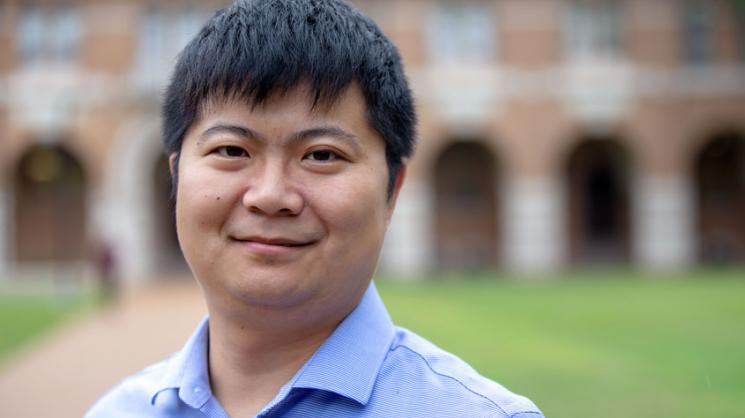An interdisciplinary team of researchers from Rice University and elsewhere has published an article featured on the cover of the December issue of the journal Environmental Science: Nano.
The lead author is Pingfeng Yu, who earned his Ph.D. in environmental engineering from Rice in 2017 and now is here as a postdoctoral research fellow. The article is titled “Bottom-up biofilm eradication using bacteriophage-loaded magnetic nanocomposites: a computational and experimental study.”
“Biofilms cause a variety of pervasive problems in water treatment, distribution and reuse systems,” said Yu, who recently was named a Future Faculty Fellow by the George R. Brown School of Engineering. “They are difficult to mitigate because of their resistance to disinfectants. We used phage-loaded magnetic nanocomposites to target the dominant bacterial species.”
Yu’s co-authors are:
Zijian Wang, a Rice visiting scholar in civil and environmental engineering (CEE) from Tianjin University
Mariana Marcos-Hernandez, a researcher in the department of chemistry and biochemistry at the University of Texas at El Paso (UTEP)
Pengxiao Zuo and Danning Zhang, CEE graduate students at Rice
Camilah Powell, a graduate student in chemical and biomolecular engineering (ChBE) at Rice University
Aaron Y. Pan, a ChBE undergraduate at Rice
Dino Villagrán, associate professor of chemistry and biochemistry at UTEP
Michael S. Wong, the William M. McCardell Professor in Chemical Engineering and department chair at Rice
Pedro J. J. Alvarez, George R. Brown Professor of CEE, of materials science and nanoengineering, and of chemistry, and director of the NSF Nanosystems Engineering Research Center on Nanotechnology-Enabled Water Treatment (NEWT) at Rice
“Our study,” Yu said, “highlights the role of nanocomposite size in biofilm eradication and advances the scientific basis for nanotechnology-enhanced, phage-based strategies for biofilm control.”
The research was supported by NEWT and by a PIRE (Partnerships in International Research and Education) grant from the National Science Foundation.

